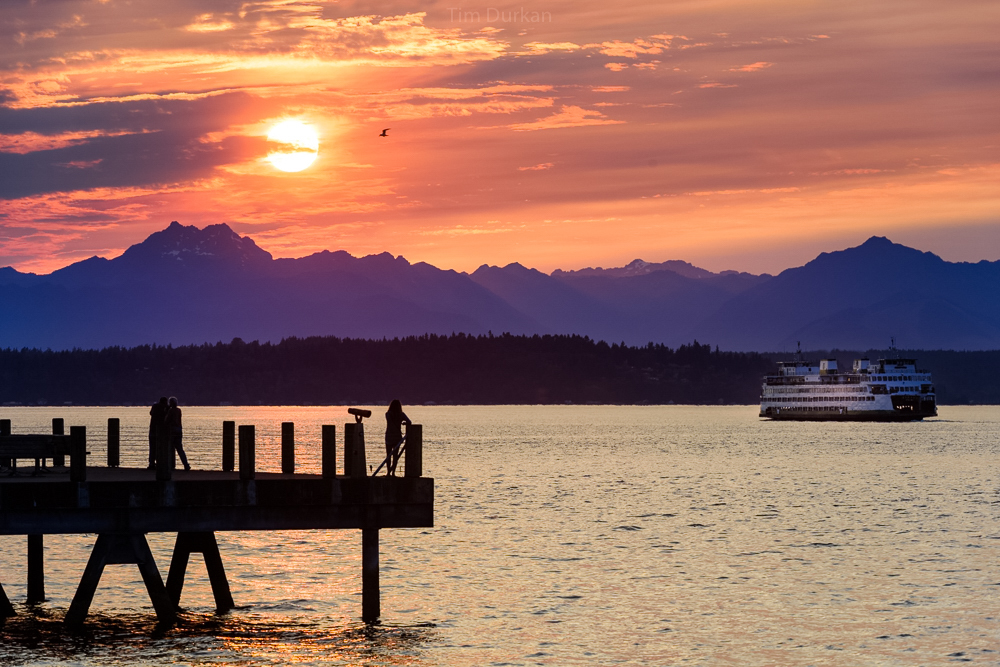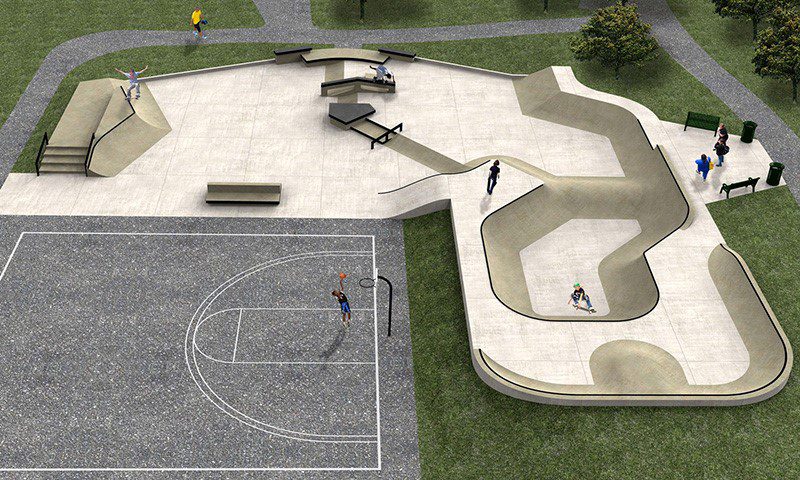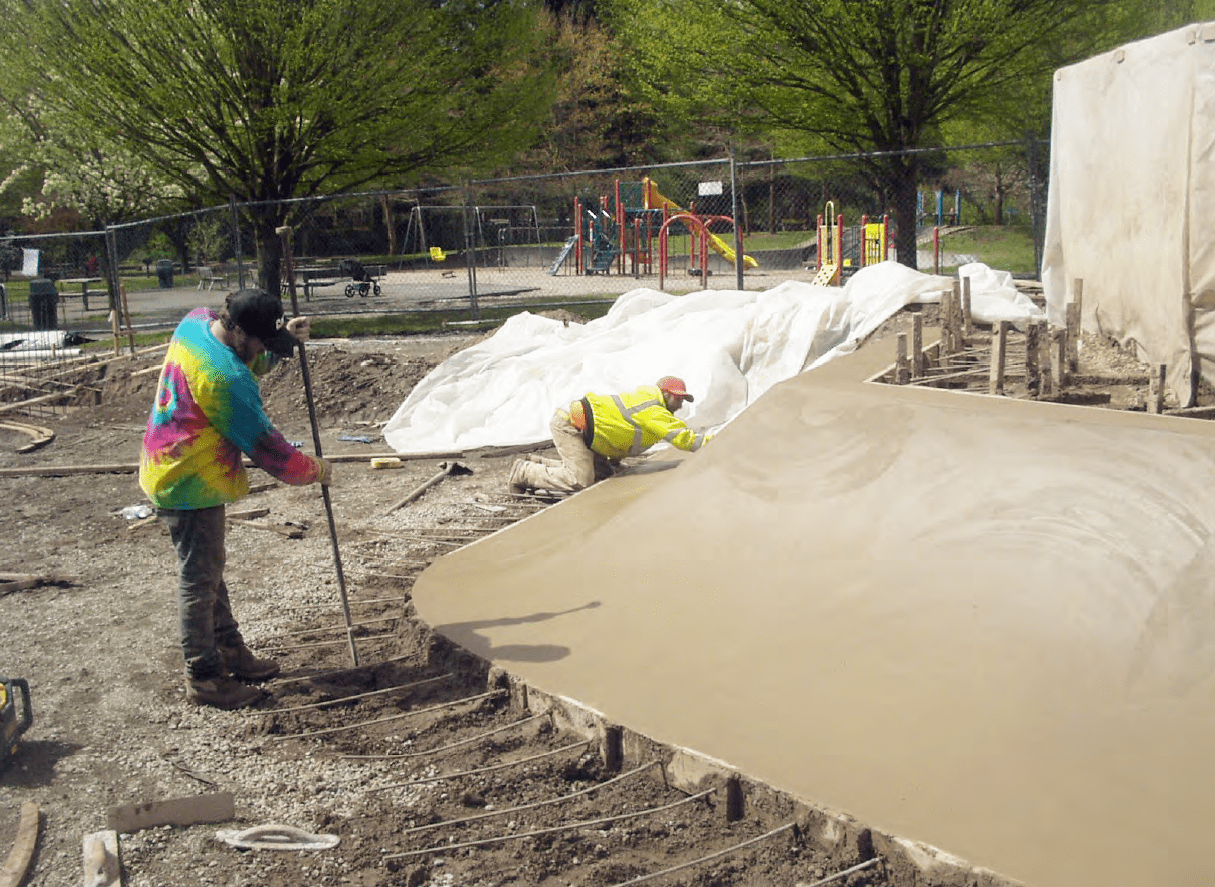
Have an idea for a park near you? Terrific! Citizens who care about their public outdoor spaces are one reason we have one of the most envied city park systems in the country. In fact, we get a lot of questions from Seattle residents about how to influence park planning and improvements. For example, a young skateboarder came across a skatepark in Lake City at the mid-point of construction. Excited that skateboarding was coming to his neighborhood, he gave the workers quite an earful of ideas for developing this new park. In honor of our budding park enthusiast, we wanted to shed some light on how Virgil Flaim skatespot went from a community request and city-wide commitment to a community-supported, publicly-funded project – and finally, a reality.
Skateboarding in a park?
To start the story of Virgil Flaim skatepark, let’s go back to February 2006, when the Seattle City Council adopts Resolution 30843 and officially recognizes skateboarding as a healthy and popular recreational activity. The council appoints a Task Force comprised of skaters, community advocates, and urban planners to develop a Citywide Skatepark Plan.
- June 2006: The Skatepark Task Force holds 3 public meetings to assess the needs of local skateboarders and residents. Citizens and agencies nominate 130 potential sites for skatespots.
- July – August 2006: All 130 sites are visited and evaluated for suitability and equitable distribution throughout the city (see Site Criteria and Framework, p. 19 of Citywide Skatepark Plan.)
- October 2006: The community gives feedback at 3 more public meetings and the list is narrowed to 26 recommended sites.
- December 2006: The Task Force presents the Citywide Skatepark Plan, which identifies safe, legal places throughout the city for people of all ages, races and genders to enjoy skateboarding, to the Board of Park Commissioners… and the Plan is approved. However, specific funding sources to develop the sites have not yet been identified or set aside in in the City budget.
- May 2007: The Plan is formally adopted by the City Council with Resolution 30984.
We have a plan! How do we fund it?
- November 2008: Voters pass the Parks and Green Spaces Levy, awarding $146 million over 6 years for improvements and additions to city greenbelts, parks, and playfields. Additionally, a $15 million Opportunity Fund is created, allowing neighborhood and community groups to propose their own projects for consideration.
- 2010 – 2013: Using Levy funds, five of the six skatespots recommended by the Task Force for priority development are completed: Dahl Playfield (2010), Jefferson Park (2011), Delridge Playfield (2011), Judkins Park (2013), and Roxhill Park (2013).
- June 2012: The Opportunity Fund calls for a second round of community applicants; $8 million is available for this distribution. (The initial round of Opportunity funding went to 15 parks and green space projects approved by City Council, after an application and selection process.)
Teamwork makes the dream work!
- September 2012: Parents for Skateparks, a local skateboarding advocacy group, wants to develop a skatepark near the commercial center of Lake City. They discover that this site was among the final 26 recommended for development in the Citywide Skatepark Plan, making it ripe for a community group to spearhead an action plan to get it built. The group finds partial funding from private sponsors and makes their case for Opportunity funds.
- January and April 2013: The Levy Oversight Committee hears presentations from more than 40 groups that applied for Opportunity funds. In April, they hold a public hearing to gather input before finalizing the list of recommended projects. These are submitted to the Mayor and City Council.
- Fall 2014 – Winter 2015: Chosen for Opportunity funding, the Lake City skatespot enters its planning phase by Seattle Parks and Recreation staff.
- July and September 2015: SPR and its design partners hold a public meeting and one Twitter discussion to review site analysis and present the preliminary layout. Designs developed from the input are presented to the public for final comments in September.
- February – August 2017: Construction proceeds on the final skatespot design in Virgil Flaim Park. Public Cost: $750,000 from the Opportunity Fund and $75,000 King County Youth Sports Grant. Wells Fargo contributed a $22,000 LIFT Grant as well.
COMPLETION and grand opening: September 2017!
See more details on the Virgil Flaim Skatespot process, including construction photos and notes from the public meetings. Come to the ribbon cutting September 9 from 11 a.m. to 2 p.m. to celebrate all the ollies, grinds, slappies and slides to come at this great new resource for the Lake City community. We look forward to sharing it with you!

